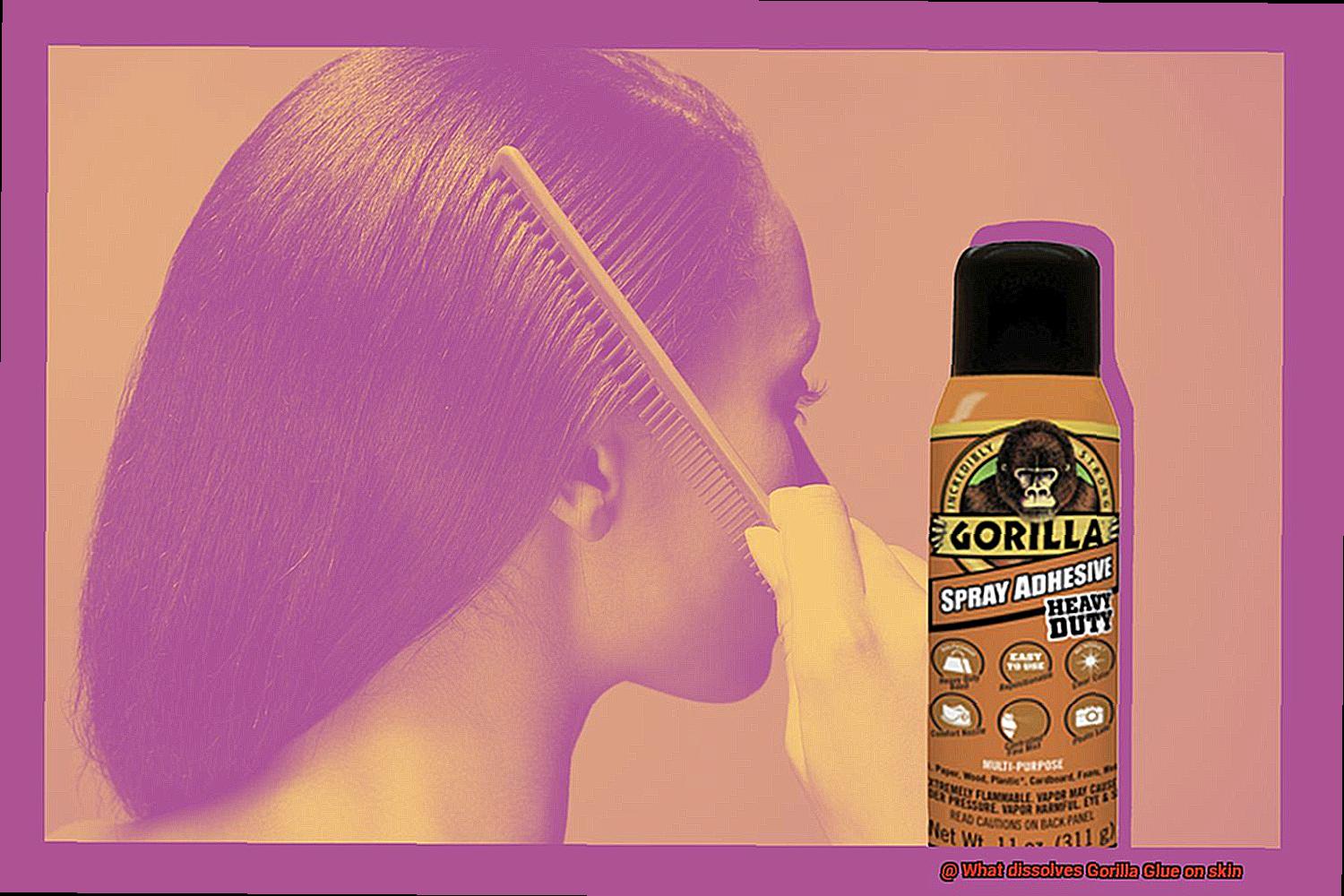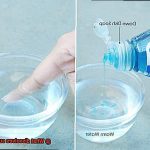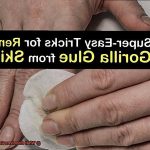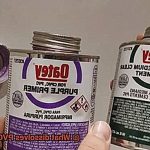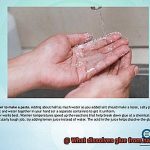We’ve all been there, dealing with life’s little accidents. And if you’ve got Gorilla Glue stuck to your skin, trust me, I feel your pain. Gorilla Glue is no joke – it’s like the superhero of adhesives, known for its crazy strength and unwavering grip. But don’t panic. Removing this sticky situation can be done, and I’ve got your back.
In this blog post, we’re diving deep into the world of Gorilla Glue removal from skin. I’ll spill the beans on a bunch of tried-and-true methods that are safe and effective. From everyday items you already have lying around to some secret weapons designed specifically for this sticky battle – we’re leaving no stone unturned.
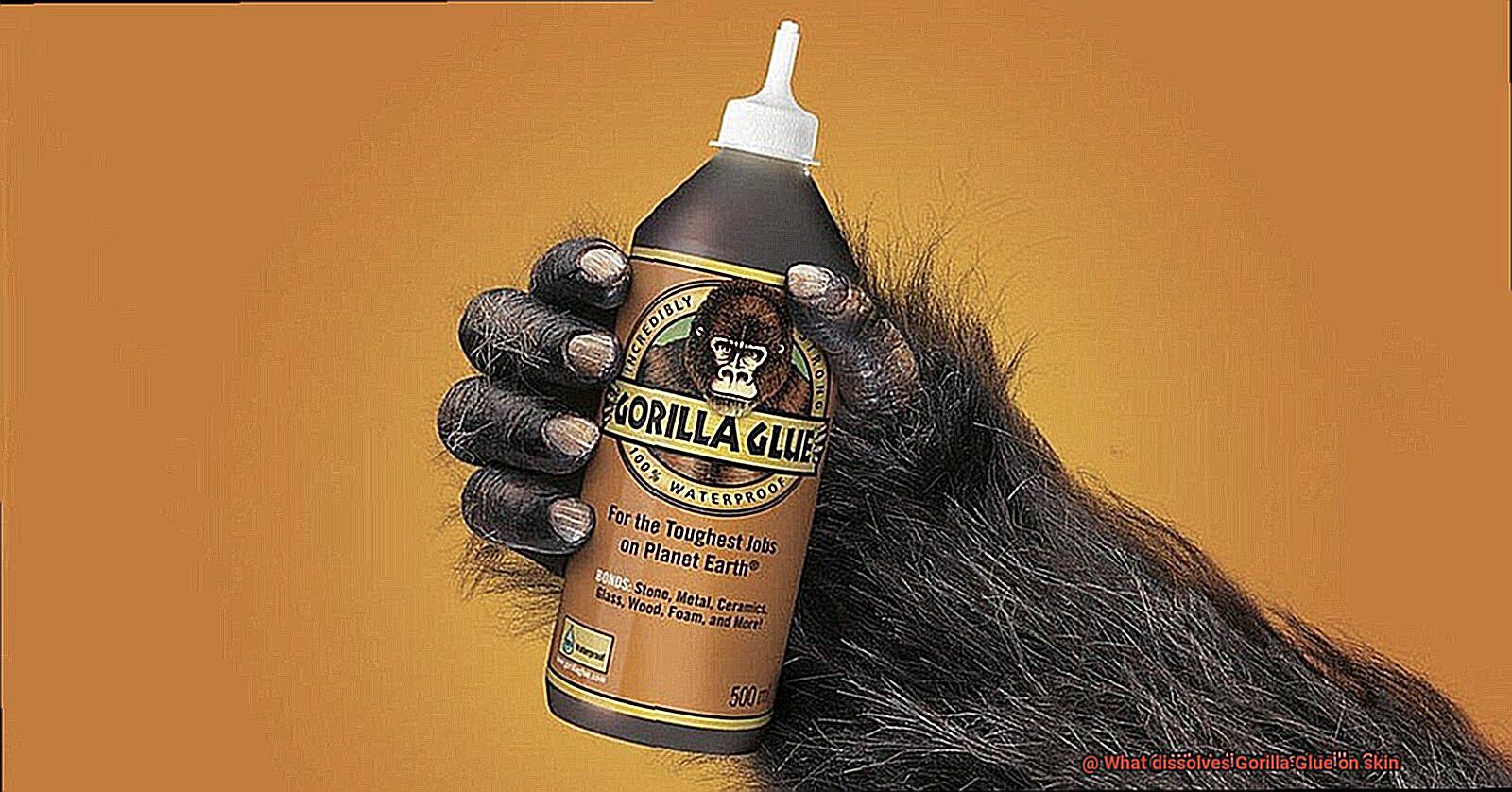
So stick with me (pun intended), because together we’ll uncover the best solutions to dissolve that stubborn Gorilla Glue from your skin without any harm or hassle. Say goodbye to the glue and hello to smooth skin in a jiffy.
What is Gorilla Glue?
Contents
- 1 What is Gorilla Glue?
- 2 What Happens When Gorilla Glue Contacts Skin?
- 3 How to Dissolve Gorilla Glue on Skin
- 4 Acetone: The Best Option for Removing Gorilla Glue
- 5 Warm Soapy Water as an Alternative for Removing Gorilla Glue
- 6 Natural Oils That Can Help Dissolve Gorilla Glue
- 7 Harsh Chemicals and Abrasives to Avoid
- 8 Professional Medical Assistance for Difficult Cases
- 9 Conclusion
Gorilla Glue is not your average adhesive. It’s a powerful and resilient bonding solution that can tackle a wide array of materials, from wood to metal to glass. What sets Gorilla Glue apart is its secret weapon: polyurethane. This incredible polymer forms an unbreakable bond when it encounters moisture, making it a force to be reckoned with.
But that’s not all. Gorilla Glue is more than just a strong adhesive; it’s a problem solver. Its foaming action is truly remarkable. When moisture hits the glue, it expands and foams up, filling in gaps and creating an even stronger bond by maximizing contact between the adhesive and the surfaces being joined. This foam also enhances the glue’s resistance to water and other environmental elements, ensuring a long-lasting bond that can withstand the test of time.
Gorilla Glue comes in various forms to suit different needs. There’s liquid glue for porous surfaces like wood and fabric, gel glue for precise control and gap filling, and even tape for quick fixes and temporary repairs. It’s a versatile lineup that caters to all your adhesive needs.
And let’s not forget about durability. Once cured, Gorilla Glue can handle extreme temperatures ranging from bone-chilling -40°F to scorching 200°F (-40°C to 93°C), making it suitable for both indoor and outdoor applications. It also laughs in the face of chemicals, making it ideal for projects that may encounter solvents, oils, or other harsh substances.
But accidents happen, right? If you find yourself with Gorilla Glue on your skin, fear not. You can safely remove it with acetone, warm soapy water, or natural oils like olive or coconut oil. Just steer clear of harsh chemicals or abrasive materials that could harm your skin.
What Happens When Gorilla Glue Contacts Skin?
When Gorilla Glue comes into contact with human skin, it can lead to several effects and potential issues. Here is a breakdown of what happens:
- Adhesion: Gorilla Glue has strong adhesive properties and can bond tightly to the skin’s surface. It sticks like a stubborn barnacle, making it difficult to remove and causing discomfort or irritation.
- Removal challenges: Trying to yank or peel off Gorilla Glue from the skin is a recipe for pain and potential damage. Aggressive removal methods can tear or break the skin, so it’s important to avoid them at all costs.
- Allergic reactions: For some unlucky individuals, Gorilla Glue can trigger allergic reactions. Certain ingredients in the glue, such as isocyanates, can turn your skin into a red, itchy, swollen mess. In severe cases, blisters or rashes may even make an unwelcome appearance.
- Sensitive areas: The face, hands, and other delicate parts of the body are particularly vulnerable when Gorilla Glue decides to make skin contact. These areas require swift action to minimize any potential harm and prevent long-lasting damage.
- Seeking medical advice: If Gorilla Glue happens to come into contact with sensitive areas like your eyes, mouth, or genitals (ouch.), it’s time to call in the professionals. Healthcare experts possess the knowledge and experience to assess the situation and provide appropriate treatment.
To remove Gorilla Glue from non-sensitive areas of the skin, soak the affected area in warm, soapy water. This gentle bath helps loosen the bond and makes peeling off the glue easier. You can also apply a moisturizer or oil like coconut oil or baby oil to break down the adhesive properties of the glue.
Prevention is key. Wearing protective gloves and clothing when working with adhesives significantly reduces the risk of unwanted encounters between Gorilla Glue and your skin.
How to Dissolve Gorilla Glue on Skin
Gorilla Glue is notorious for its strong bonding properties, making it a challenge to remove from the skin once it has dried. However, there are several effective methods you can use to safely dissolve Gorilla Glue and restore your skin’s comfort. In this article, we will explore five techniques that involve using warm soapy water, acetone, vegetable oil, vinegar, and petroleum jelly.
Acetone:
Acetone, commonly found in nail polish removers, is a powerful solvent that can break down the adhesive properties of Gorilla Glue. To use acetone, soak a cotton ball or cloth with the solvent and gently rub it on the affected area. Avoid using excessive force to prevent skin irritation. Afterward, wash the area with soap and water to remove any residue.
Vegetable Oil:
If you don’t have acetone available, vegetable oil serves as a helpful alternative. Apply a generous amount of vegetable oil to the affected area and gently massage it in. The oil helps loosen the adhesive, making it easier to peel off the glue. After a few minutes, begin peeling off the glue and rinse the area with soap and water to remove any remaining oil.
Warm Soapy Water:
Soaking the affected area in warm soapy water is a gentle and safe option for dissolving Gorilla Glue on the skin. Begin by soaking the area in warm water for about 15 minutes to soften the glue. Then, create a soapy solution using mild soap or dishwashing detergent. Gently scrub the glue with a soft brush or sponge until it starts to dissolve. Rinse thoroughly with warm water and pat dry.
Vinegar:
For those who prefer natural remedies, vinegar can effectively dissolve Gorilla Glue on the skin. Soak a cotton ball or cloth in vinegar and gently dab it on the affected area. Allow it to sit for a few minutes before attempting to peel off the glue. Rinse the area with warm soapy water to remove any vinegar residue.
Petroleum Jelly:
When dealing with smaller areas of Gorilla Glue on the skin, petroleum jelly can be quite effective. Apply a thick layer of petroleum jelly to the affected area and let it sit for a few minutes. The jelly will help soften the glue, making it easier to peel off. Use a blunt object like a spoon or your fingernails to gently scrape off the softened glue. Clean the area with warm soapy water afterward.
Acetone: The Best Option for Removing Gorilla Glue
Acetone is the ultimate solution for removing Gorilla Glue from various surfaces, including skin. This extraordinary solvent possesses the power to dismantle the adhesive properties of the glue, rendering it effortlessly removable. Let’s delve into why acetone stands out as the best option:
- Effectiveness: Acetone demonstrates unrivaled efficacy in dissolving Gorilla Glue. It infiltrates the adhesive, undermining its bond and facilitating easy removal. No other solvent can match its remarkable performance.
- Availability: The beauty of acetone lies in its ubiquity. It can be found in numerous households, conveniently tucked away in products like nail polish remover. This accessibility ensures that acetone is always at your fingertips in times of need.
- Pure Form: Opting for pure acetone, devoid of additives or fragrances, is imperative when using it to eradicate Gorilla Glue. This guarantees that the solvent operates at its maximum potential, effortlessly breaking down the adhesive.
- Application: The process of using acetone to eliminate Gorilla Glue is refreshingly simple. Just soak a cotton ball or cloth in acetone and gently rub it on the affected area. Although dissolving the glue may require some time and repeated applications, acetone streamlines the task significantly.
- Safety: While acetone is generally safe for use on skin, exercising caution is crucial. Its drying effect necessitates moisturizing after glue removal. Furthermore, refrain from employing acetone on open wounds or sensitive areas as it may induce irritation.
Warm Soapy Water as an Alternative for Removing Gorilla Glue
Warm soapy water serves as a practical and effective alternative for removing Gorilla Glue from the skin. This formidable adhesive is notorious for its strong bonding properties, making it a challenge to remove once it adheres to the skin. However, the use of warm soapy water can aid in breaking down the glue and facilitating its removal.
The process begins by soaking the affected area in warm water for a few minutes. The warmth of the water serves to soften the glue, making it more pliable and easier to work with. Subsequently, a generous amount of mild soap is applied to the area and gently rubbed in. The soap works to dissolve the adhesive and further weaken its bond. It is recommended to allow the soapy water to sit on the glue for a few minutes, providing ample time for it to break down.
Proceeding this step, thorough rinsing of the area with warm water is crucial, followed by gentle scrubbing with a soft cloth or sponge to eliminate any remaining traces of glue residue. Patience and gentleness during this process are imperative to prevent skin damage. If necessary, repeat the process until all traces of Gorilla Glue are successfully removed.
One notable advantage of using warm soapy water is its accessibility and its safety for most skin types. Unlike acetone, which may cause dryness or irritation, warm soapy water is gentle on the skin without presenting any significant risks. Additionally, warm soapy water can be utilized as a first-line treatment before resorting to more aggressive methods such as acetone.
However, it is important to acknowledge that in certain cases, warm soapy water may not be as effective as acetone. Gorilla Glue can form an exceptionally strong bond that may require a more potent solvent for complete removal. In such instances, employing acetone or seeking professional assistance may be necessary.
Natural Oils That Can Help Dissolve Gorilla Glue
When it comes to dissolving Gorilla Glue, natural oils can be a lifesaver. Not only do they offer a gentle and effective alternative to harsh chemicals, but they also bring along their own unique properties that can break down this stubborn adhesive. Let’s dive into the world of natural oils and explore how coconut oil, olive oil, tea tree oil, lemon essential oil, eucalyptus essential oil, and almond oil can help dissolve Gorilla Glue.
Coconut oil takes the lead with its impressive solvent properties. Packed with lauric acid, it can easily break down the bond of Gorilla Glue. Simply apply a generous amount of coconut oil to the affected area and massage it gently. Give it a few minutes to work its magic, allowing the oil to penetrate the glue. Then, with careful precision, peel or rub off the softened glue.
Next up is olive oil, a pantry staple that contains fatty acids capable of dissolving Gorilla Glue. Apply a small amount of olive oil to the glued area and massage it in gently. Let it sit for a few minutes before carefully removing the softened glue.
Tea tree oil steps in with its adhesive-breaking terpenoids. Dilute a few drops of tea tree oil with a carrier oil like coconut or olive oil, and apply it to the affected area. Allow the mixture to sit for a few minutes before attempting to remove the glue.
Lemon essential oil joins the party with its d-limonene content—a natural solvent that can break down adhesives. A few drops of lemon essential oil directly on the glued area will do the trick. Let it sit for a few minutes, and then gently rub or peel off the softened glue.
Eucalyptus essential oil is another ally in dissolving Gorilla Glue. With cineole as its secret weapon, this essential oil can help break down even the strongest adhesive. Mix a few drops of eucalyptus essential oil with a carrier oil and apply it to the glued skin. Allow it to sit for a few minutes before attempting to remove the glue.
Last but not least, almond oil steps onto the scene with its fatty acid prowess. Apply a small amount of almond oil to the affected area and massage it in gently. Leave it on for a few minutes before carefully removing the softened glue.
Harsh Chemicals and Abrasives to Avoid
When it comes to removing Gorilla Glue from the skin, it is crucial to avoid harsh chemicals and abrasives that can cause harm or damage. The first chemical to avoid is acetone. While it can effectively dissolve Gorilla Glue, acetone is highly volatile and can cause skin irritation, dryness, and even burns if used improperly. It’s best to steer clear of acetone, especially if you have sensitive or damaged skin.
Another chemical to stay away from is bleach. Although bleach is a powerful disinfectant and cleaning agent, it should never be used on the skin to remove Gorilla Glue. Bleach is highly corrosive and can cause chemical burns or irritation when applied directly to the skin. It’s important to prioritize safety and avoid using bleach as a solution for dissolving Gorilla Glue on the skin.
In addition to chemicals, abrasive materials such as sandpaper or pumice stones should also be avoided. These rough materials can cause friction and damage to the skin, leading to irritation, redness, or even abrasions. While they may seem effective in mechanically removing the glue, they can do more harm than good.
Furthermore, it’s crucial to avoid using other harsh chemicals or solvents like paint thinner, gasoline, or turpentine on the skin. Not only are these substances harmful, but they can also worsen any existing irritation or damage caused by the adhesive.
Professional Medical Assistance for Difficult Cases
These professionals, including dermatologists, plastic surgeons, or emergency room personnel, have the specialized knowledge and tools necessary to handle these cases effectively.
One of the reasons why it is important to seek professional medical assistance is that these experts have access to medical-grade solvents or adhesive removers specifically designed to dissolve strong adhesives without causing harm. Attempting to remove Gorilla Glue on your own using potentially harmful substances or techniques can lead to skin irritation, burns, or other adverse reactions. By consulting a healthcare professional, you minimize the potential harm and ensure safe glue removal.
Another benefit of seeking professional medical assistance is that these professionals can evaluate the extent of the glue’s penetration into the skin and provide guidance on avoiding infection or other complications associated with prolonged exposure. They can also monitor the removal process carefully to ensure that no residue remains, reducing the risk of allergic reactions or long-term skin issues.
CoNOAlIFCBQ” >
Conclusion
In conclusion, removing Gorilla Glue from your skin may seem like a daunting task, but fear not. There are effective methods to dissolve this stubborn adhesive and restore your skin to its smooth and glue-free state.
The most powerful solution for tackling Gorilla Glue on skin is acetone. This mighty solvent breaks down the glue, making it easier to remove. However, it’s important to handle acetone with caution as it can cause dryness and irritation. After removing the glue, be sure to moisturize your skin and avoid using acetone on open wounds or sensitive areas.
If acetone isn’t available or suitable for your skin type, fret not. There are alternative methods that can work wonders. A warm soapy water soak is a gentle option that helps soften the glue for easy removal. Natural oils like coconut oil, olive oil, tea tree oil, lemon essential oil, eucalyptus essential oil, and almond oil can also come to the rescue by dissolving Gorilla Glue effectively.
When dealing with Gorilla Glue on your skin, steer clear of harsh chemicals like bleach or abrasive materials such as sandpaper or pumice stones. These substances can cause damage or irritation that you definitely want to avoid.
In those tough cases where Gorilla Glue has penetrated deeply into the skin or if you’re experiencing severe reactions or discomfort, it’s wise to seek professional medical assistance. Healthcare experts have access to specialized solvents and adhesive removers designed specifically for safe glue removal.
Always prioritize safety and take necessary precautions when handling Gorilla Glue near your precious skin. Prevention is key – donning protective gloves and clothing while working with adhesives significantly reduces the risk of any unwanted encounters between Gorilla Glue and your skin.
So don’t panic if you find yourself in a sticky situation with Gorilla Glue clinging onto your skin – rest assured that there are solutions available that will dissolve the glue without harming your skin.

